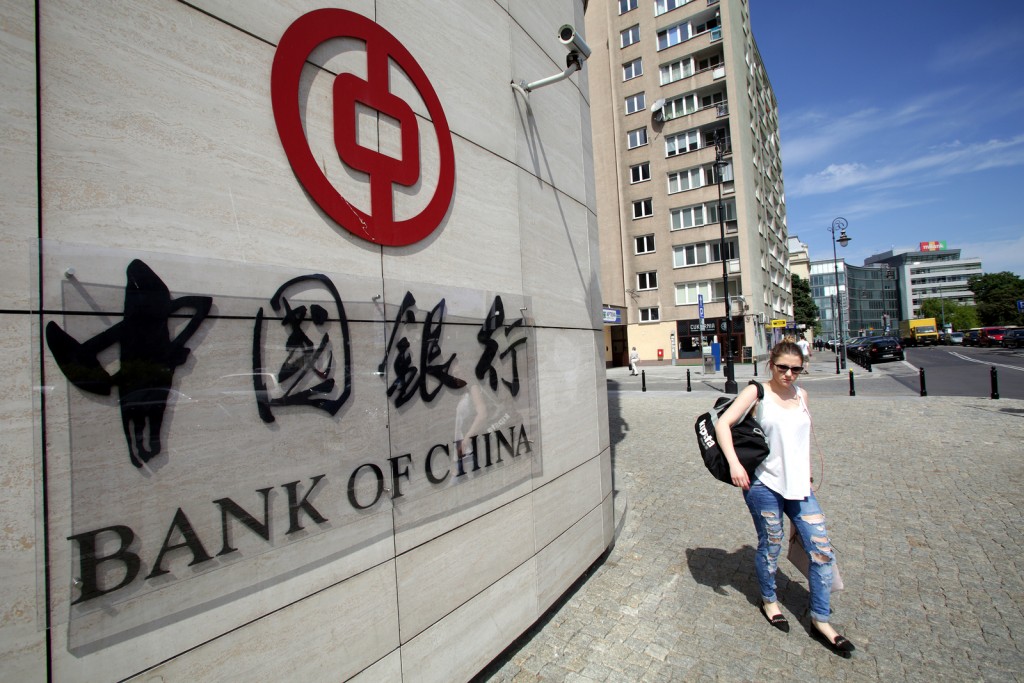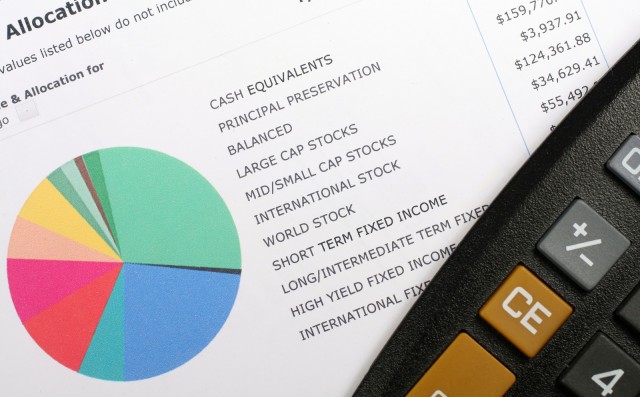Why building a Portfolio is tough in Asia.
Portfolio Diversification – Is a Difficult Task
Diversification in portfolio management is important. The modern portfolio theory says so too. It is an apparent time-tested investment & risk management strategy.
Related Articles:
- What Wealth Managers in Singapore struggle with?
- 8 Reasons why customers don’t understand the value of Wealth Managers
- 7 Secrets how the old rich achieve success with wealth managers
- The complexity of Market view, house view, clients’ view and your view
- 8 Reasons why clients prefer to place money in deposits than investments
- How do you manage clients during financial crisis & market downturn?
But in Asia, it is difficult to achieve diversification. We study 8 reasons why:
” Wide diversification is only required when investors do not understand what they are doing ”
~ Warren Buffett
No. 1 Asian’s Preferred Asset Allocation

Asia’s Preferred Asset Allocation:
- Equities & Stocks
- Equities & Cash
- Cash & Properties
What is missing? Equities or Bonds. This creates a major obstacle to getting clients to construct a proper portfolio. Even if a portfolio is built, it is a small percentage of their wealth. Read More: What are the challenges of an Investment Advisor?
Sidenote
- Market Capitalization of all Listed Co in Singapore: S$969 Billion
- Outstanding Local Currency government bonds in Singapore S$192 billion
- No Statistics on Corporate Bonds: Most Corporate Bonds required Accredited Investor Status or $200,000 Per Investment.
- 2015 Stock Exchange Market Capitalization
Source: Caproasia Intel 2015
What is Diversification?
Investing into a variety of securities or asset classes to reduce non-systemic risks. Volatility and correlation are empirical factors to measure diversification. Or it means:”Don’t put all your eggs in one basket.”
No. 2 Under-developed Bond Market in Asia

An under-developed bond market in Asia affects portfolio allocation. Without a large unified market and population, there is no strong, preferred & sustainable Asian currency for bonds issuance. Having a single reference currency eliminates foreign exchange risk in the portfolio construction.
Although there are sovereign bonds and blue-chip bonds available, they usually end up in the hands of institutional investors, where they purchase in bulk. Individual investors are left with corporate bonds with issue sizes ranging from $50 Million to $300 Million in issue size. As the issue sizes are typically small on an international scale, most investors end up holding the bonds till-maturity, leaving the bond market with almost no liquidity. Given that the market has no liquidity, the bond spread is wider (cost of transaction is higher), compounding the reason why investors prefer to hold bonds till maturity.
The Asian bond markets have few instruments to short interest rates. For duration, there is limited tenor to choose from. Example: short, medium, long term bonds. This means bonds itself, is a long long only investment (duration & direction).
No. 3 Investing into Global Bonds.
But there’s Unit Trust funds that invests into bonds. Yes there are. Unfortunately, the bonds are mostly denominated in USD or EUR, even if the fund is denominated in local currency. This adds to another layer of risks, which is a reason why most investors stay away from foreign currency investments because their expenditure is in local currency (SGD, MYR, HKD etc).
Some bond funds have foreign exchange hedging, which then means if the hedge goes wrong, it reduces the fixed income returns or result in losses. Hedging foreign exchange also adds up another layer of cost.
The expertise of traditional bond managers is in fixed income, not foreign exchange trading.
No. 4 Lack of a Large & Mature Financial Market

Not only is there a lack of debt market, there is no large and unified stock market in Asia yet. Below is the total market capitalization of leading stock exchange in Asia.
In 2015, the total capitalization of New York Stock Exchange alone is $19.2 Trillion compared to 10 Largest Exchange in Asia totalling $20.9 Trillion.
| Asia Largest Stock Exchange | Total Market Capitalization |
| Tokyo Stock Exchange | $4.4 Trillion |
| Shanghai Stock Exchange | $3.9 Trillion |
| Hong Kong Stock Exchange | $3.3 Trillion |
| Shenzhen Stock Exchange | $2.2 Trillion |
| Bombay Stock Exchange | $1.6 Trillion |
| National Stock Exchange of India | $1.6 Trillion |
| Korea Exchange | $1.2 Trillion |
| Australia Stock Exchange | $1.2 Trillion |
| Taiwan Stock Exchange | $0.8 Trillion |
| Singapore Stock Exchange | $0.7 Trillion |
| World Largest Stock Exchange | Total Market Capitalization |
| New York Stock Exchange | $19.2 Trillion |
| NASDAQ | $6.8 Trillion |
| London Stock Exchange | $6.1 Trillion |
- 15th August 2015
- All figures in USD
Source: Caproasia Intel 2015
No. 5 Public Sector Intervention
There is constant intervention in the stock market and on traditional business sectors. As most of Asia is in the development stage, public sector policies’ influence tends to be high. This leads to government-led consolidations and newly created government related listings in the stock market, messing up analysts’ well-researched forecasts.
No. 6 Too Many Fund House to Choose From

Other than constructing a quality portfolio, there are just too many Unit Trust Funds to choose from. For example, there are 35 leading Fund House in Singapore and many China Unit Trust Funds to choose from. This creates a big selection problem for wealth managers, especially knowing that past performance is not indicative of future performance.
Example of China Funds:
- First State China Fund
- Aberdeen China Fund
- Schroder China Fund
- DWS China Fund
- Fidelity China Fund
- Franklin Templeton China Fund
- Lion Capital China Fund
In many financial institutions, they adopt the best-in-class selection. It used to work when there were only a handful of funds to choose from. Today, most banks will carry the large fund management firms and many mid-sized fund management firms.
If there is a clear winner, there would have been consolidations to a few strong players. There isn’t yet. But having many have creates a liquid market with many different buyers and sellers. This prevents a few major players from controlling the volume of buy and sell trades.
However, the many options have provided Wealth Managers difficulty in selecting the right fund manager. And not forgeting the growing Exchange Traded Funds (ETFs) as an alternative to Unit Trust.
Related Articles:
No. 7 Plague by Liquidity

No matter the kind of portfolio constructed, there is always liquidity issue in Asia. Be it in Equities, Bonds, or Currencies.
Example of Liquidity Problem:
- Company ABC: Bonds $100 Million Issue
- A client needs to sell $2 Million of Bonds.
- Average Daily Volume: $500,000.
- It takes 4 days to sell $2 Million of Bonds w/o affecting price movements.
No. 8 Asia is growing. Is there a need for diversification?

This poses the biggest challenge. Wealth Managers are constantly being questioned for the need to invest into slow growing developed markets such as United States or Europe against fast growing economy such as China and India.
The story to invest into mature markets had always been the developed & transparent financial system. However, Asian GDP and equities growth had been phenomenal. China and India contributes to 16.02% of global GDP and this number is rising quickly (Source: Caproasia Intel 2015). 8 countries contribute to 76.54%: Follow their Central Banks.
Will diversification ever be possible for the Asian Wealth Management community and clients? Read More: What Wealth Managers in Singapore Struggle With?
Related Articles:
- What Wealth Managers in Singapore struggle with?
- 8 Reasons why customers don’t understand the value of Wealth Managers
- 7 Secrets how the old rich achieve success with wealth managers
- The complexity of Market view, house view, clients’ view and your view
- 8 Reasons why clients prefer to place money in deposits than investments
- How do you manage clients during financial crisis & market downturn?
Sign Up / Register
Caproasia Users
- Manage $20 million to $3 billion of assets
- Invest $3 million to $300 million
- Advise institutions, billionaires, UHNWs & HNWs
Caproasia Platforms | 11,000 Investors & Advisors
- Caproasia.com
- Caproasia Access
- Caproasia Events
- The Financial Centre | Find Services
- Membership
- Family Office Circle
- Professional Investor Circle
- Investor Relations Network
Monthly Roundtable & Networking
Family Office Programs
The 2025 Investment Day
- March - Hong Kong
- March - Singapore
- July - Hong Kong
- July - Singapore
- Sept- Hong Kong
- Sept - Singapore
- Oct- Hong Kong
- Nov - Singapore
- Visit: The Investment Day | Register: Click here
Caproasia Summits
- The Institutional Investor Summit
- The Investment / Alternatives Summit
- The Private Wealth Summit
- The Family Office Summit
- The CEO & Entrepreneur Summit
- The Capital Markets Summit
- The ESG / Sustainable Investment Summit






























